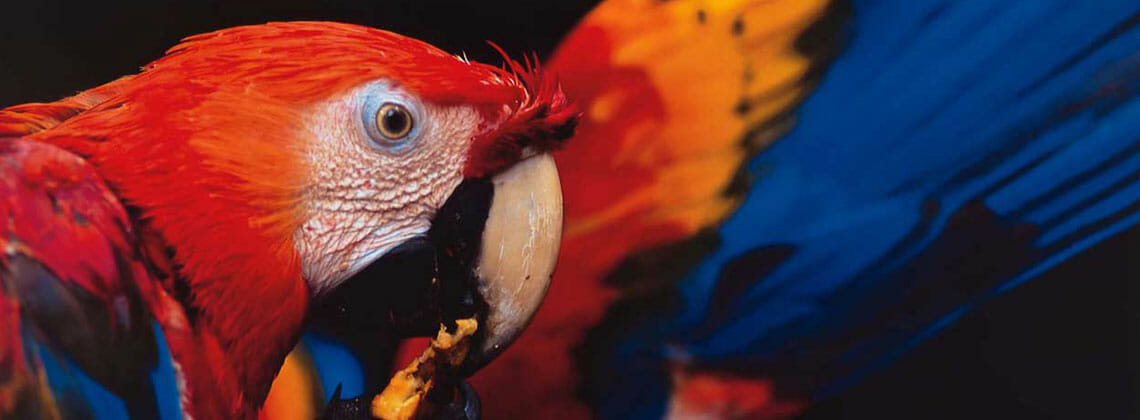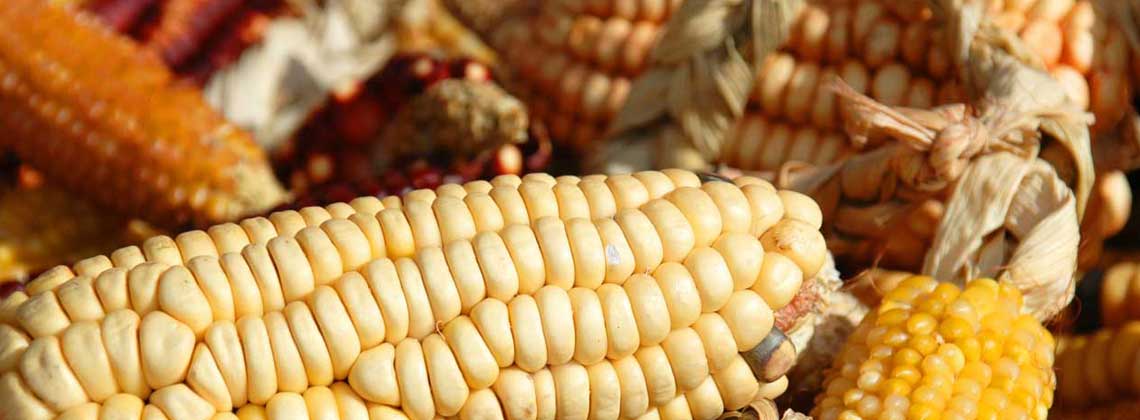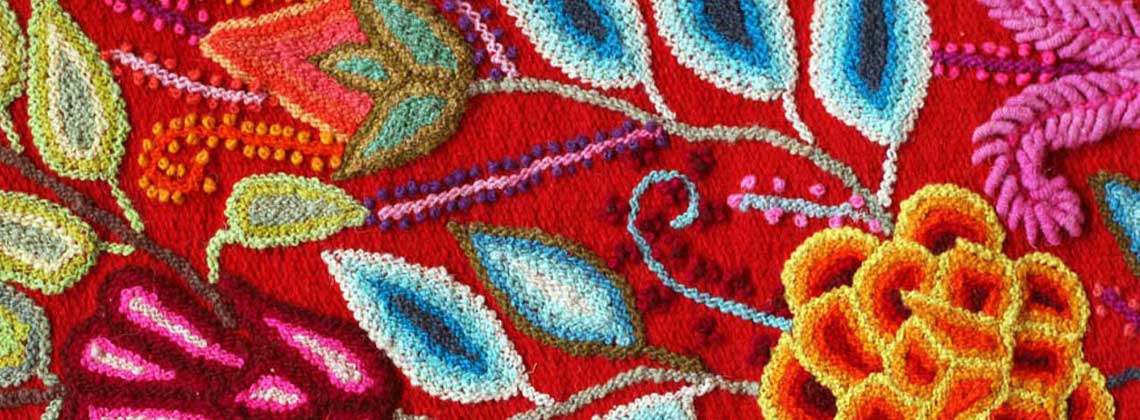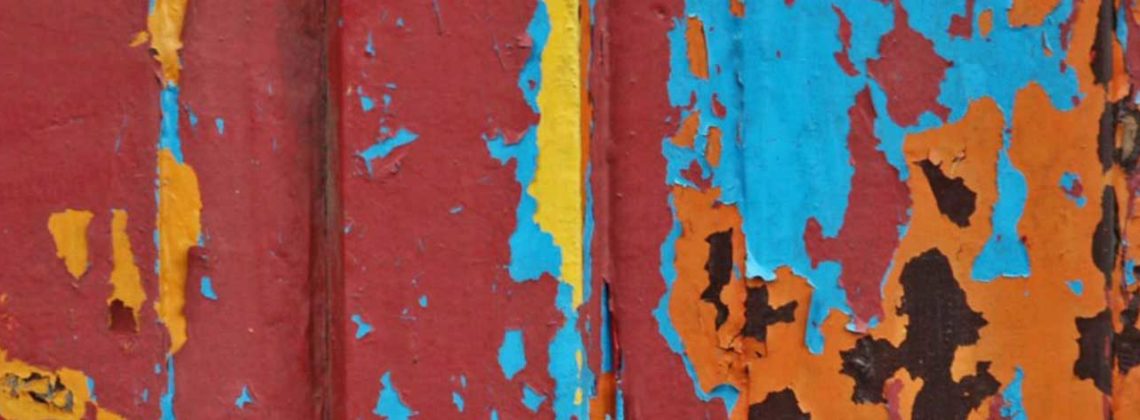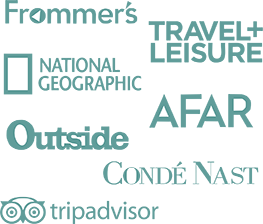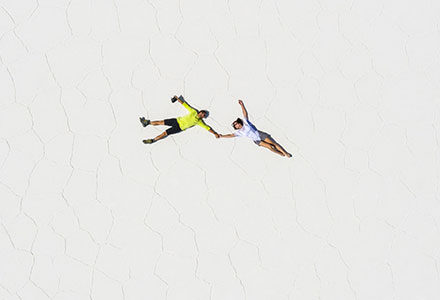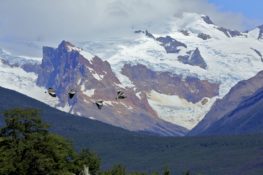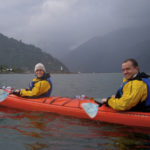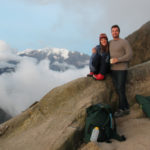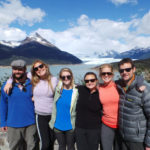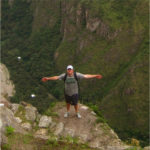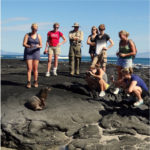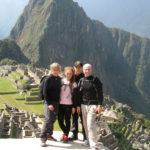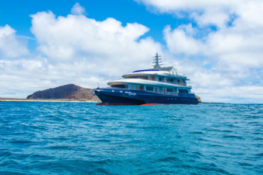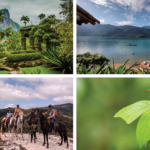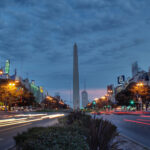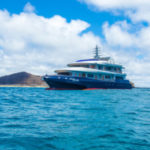
This past August my colleague Kayli and I traveled to Peru for two and a half weeks, and, for me, it was both a magical and intimidating adventure to embark on.
Walking up the steps of the Pisac Ruins in Peru’s Sacred Valley, I began to make a mental list of all the things I had previously thought would make me a terrible adventurer on a trip to Peru:
1. I had never been to high altitude and I have asthma;
2. I am an inexperienced hiker with bad knees;
3. I am terrified of spiders;
4. I had not been training as much as I should have – in fact, I hadn’t done much of any activity in the two weeks leading up to my trip! (Note that I do not necessarily recommend this.)
And yet, as this list came into my mind (very easily, I might add), I still found myself standing on top of a set of ruins in Pisac, staring out at an actual rainbow that spanned across the mountaintops in front of me. And all I could think to myself was, “Here I am, on a literal adventure in Peru.”

When preparing for your own adventure to Peru, you may find yourself coming up with a list not unlike mine. And you wouldn’t be alone in doing so. We’ve compiled the 4 most frequently asked questions from our Peru FAQs we get from travelers before going to Peru, along with Knowmad’s recommendations for helping you feel completely prepared before heading out on your own Peruvian adventure.
1. How to deal with the effects of altitude?
Altitude is certainly something to be aware of and prepare for before your trip to Peru. The Southern Highlands, which includes Cusco, the Sacred Valley & Machu Picchu, and the Lake Titicaca and Arequipa & Colca Canyon regions are some of the most popular areas to visit where you’ll encounter high elevation.
Peru Elevation & Distances

- Cusco – 11,152 ft. above sea level
- The Sacred Valley – around 9,000 ft. above sea level
- Machu Picchu – 7,972 ft. above sea level
- Lake Titicaca – 12,507 ft. above sea level
- Arequipa – 7,661 ft. above sea level
Knowmad recommends visiting a travel doctor about 8-6 weeks prior to your trip to discuss any questions or concerns you have that are medical-related. Mention to them if you’ll be traveling to areas of high elevation, and make sure to bring up any current medical conditions you have and medications you’re taking as well. They may suggest certain medications that can help with altitude sickness, or other precautions to take specific to your personal medical history.
All of Knowmad’s trips are private and custom, so we take care to make sure the flow and pacing of each trip allows for proper acclimatization for high altitude destinations. For example: If traveling to the Southern Highlands, we typically have travelers fly into Cusco to arrive but sleep in the Sacred Valley and explore the different sites in the Valley while you acclimatize. Sleeping at a lower elevation than your daily activities as you’re introduced to high elevation helps your body adjust better, helps you sleep better, and helps temper your time at elevation nicely. You may have activities that are higher than 9,000 feet during the day, but coming back to your hotel to rest and take it easy in the evenings will help prepare you to visit and stay at higher elevations during the rest of your trip, such as Cusco or Lake Titicaca.
Knowmad’s Dos and Don’ts of acclimatizing:
- Do hydrate. Make sure you’re sipping on water regularly. Not drinking a lot all at once, but maintaining a steady amount of hydration.
- Do drink coca tea. Coca leaves or tea will be available at nearly every hotel and restaurant you’ll go to. It can help with nausea, headache, fatigue, and other altitude-related effects. If you’re a coffee drinker, try drinking both coffee and coca tea in the mornings with a small cup of each, as coffee is dehydrating. I put several loose leaves of coca tea into a cup and poured hot water & some cream into mine, and had a slightly smaller cup of coffee than normal along with it.
- Do tell your guide if you’re not feeling well. Your guides are trained to watch for and respond to any altitude sickness that may occur, and they’ll be checking in with you regularly to make sure you’re doing okay, but do let them know if you’re not feeling well.
- Don’t overexert yourself. Take it easy during the day and make sure to rest and get to bed early at night your first couple of nights at high altitude.
- Don’t drink alcohol for the first couple days when at high altitude. You want to make sure you’re staying hydrated when you first arrive to high altitude, so avoiding alcohol or other things that dehydrate will help as your body adjusts.
About 6 weeks before my trip, I talked with both my regular doctor and a travel doctor about my asthma and altitude questions. They explained what to watch for with altitude sickness, and stressed the importance of acclimatizing. I definitely could tell I was working harder than normal to just walk up stairs when I was at high altitude, but not so much that it interfered with any of our activities. I drank water and coca tea regularly, checked in with my guide throughout the day, and made sure to get plenty of sleep the first few nights.
2. What to know about Peru’s rainy and dry seasons?
Seasonality can definitely play a part in your trip to South America, and Peru weather does have a rainy season and a dry season. Their rainy season is from about November to April, and their dry season is from about May to October, but the overall effect the seasons will have on your trip isn’t too dramatic in terms of your activities or what to pack.
Peru’s rainy season doesn’t mean there’s heavy down-pouring each day, but rather more akin to the kind of rain you see during April showers in the Midwest: you’ll likely see some rain here and there during your trip, but it won’t be all day every day. Because of the rain, however, the months during Peru’s rainy season aren’t as busy as the dry season months, which can be a plus if you’re looking to have a less populated visit to some of the big sites. The rainy season is also when you’ll get the most lush, green views of Peru’s countryside. One important note is that, if wanting to do the Inca Trail or Inca Trail Express, the trail is closed in February due to the wetter conditions. Ask your Trip Specialist about how Knowmad does the Inca Trail.
Peru’s dry season can also see some rain, but it’s not as frequent or expected as during the rainy season months. Dry season is the more popular time of year to visit, with May being the most popular month. Something that I found rather special about the dry season (Kayli and I were there in August and the beginning of September) was how very cool it was to see the mountains so bare. I loved getting to see what they are like under their usual layer of foliage – it felt like we were getting a special glimpse into what the mountains really look like.
Peru Weather Information

The rainy season primarily spans over Peru’s summertime and the dry season over their wintertime, but the actual temperatures don’t fluctuate that much from season to season. When packing for your Peru trip, consider adding an additional warm outer layer if you’re traveling from May – October, or swapping a warm layer for a lighter one that can go under a rain shell if traveling from November – April.
For this precipitation chart and other facts about Peru, click the link for a printable version of our Peru by Numbers infographic, and take it with you on your travels!
3. Is the water safe to drink and how do I avoid stomach issues?




Water in Peru is not safe to drink, so do not drink it or use it to rinse things such as your toothbrush. All Knowmad vehicles are equipped with large jugs of water for you to refill smaller water bottles when out and about during excursions. As such, we suggest bringing a refillable bottle to do so as you wish, and also remembering to refill your bottle when your Knowmad driver drops you off at your hotel after excursions. The hotels we work with will offer bottles of water as well, but some may only be available to be purchased for a small fee, depending on your hotel.
To help avoid other stomach issues, especially if you have a more sensitive digestive system, Knowmad suggests only eating fruits that have an outer layer you have to peel (oranges, bananas, or the delicious and curious-looking passionfruit that’s very popular). If the food is out in a buffet, also avoiding any cheeses or meats that have been sitting out as well. Otherwise, food is actually one of the most popular and exciting reasons to travel to Peru. Peru has become quite well known in the cuisine world for preparing and introducing new and delicious foods, and Peru’s restaurant scene is continuing to impress.
Neither Kayli nor I had any stomach troubles, and we found that the fruit we got from hotels and the meals we ate out were some of the most delicious. But we did quickly learn to save some water each evening to use for brushing our teeth that night and the following morning!
4. How to prepare for a full-day hike if I’m an inexperienced hiker?


If you’re not a frequent hiker, doing so for an entire day – or even half a day – can feel like a huge undertaking. Between the footwear, training, and planning what to take in your daypack, add in the high altitude factor, and it easily becomes an intimidating adventure day for inexperienced hikers. However, the gains far outweigh the worries, once you’re on the trail. We take preparing for your hikes and knowing what to expect seriously at Knowmad, especially if you’ll be hiking at higher elevation. Here are our recommendations for getting the most out of your hikes in Peru if you don’t hike that often or are just getting started:
1. Get to know the route & trail. Look over the altitude numbers, total elevation gain, and ask what kind of terrain you’ll be hiking on. For the Inca Trail Express, we hiked up what our guide called “Peruvian Flat”, which is to say a mixture of flat trail that’s at a bit of an incline and going up clusters of Incan steps every few minutes.
2. Practice. If there’s a high elevation gain on your hike, find a good hill nearby and walk up and down it as you’re able to, use the stair machine at your gym, or find a park in your area and enjoy some local hiking.
3. Plan your footwear ahead. Before wearing new hiking shoes or boots, be sure to allow for enough time to properly break them in before you head out on your trip. Choose shoes that give you good ankle support and that you can feel comfortable walking in for a full day.
4. Pre-pack your daypack. Make sure your daypack is comfortable and fits the few items you’re looking to carry, while leaving room for storing a layer or two in case you shed them during the hike.
5. Layers are key. You’ll want to be prepared to protect against the elements, come what may, including a warmer, long-sleeve layer, a rain shell, and possibly even a hat and gloves.
6. Conserve your energy from the beginning. Our guide on the Inca Trail Express told me to imagine I were on the moon and to step like an astronaut would: very slowly with controlled, intentional steps.
7. Rent trekking poles. They help to propel you up steps or steep trail and can offer stability when your legs are tired. They also take some of the impact off your knees when going down steps or hills. I was incredibly glad I had them during the Inca Trail Express, and the poles Knowmad uses have adjustable lengths, so that you can shorten & attach them to your pack when you don’t want to use them.
8. Sunscreen, sunscreen, sunscreen. When you’re at higher elevation, the sun is stronger and can burn much more easily than you may be used to, even when it’s cloudy.
9. Alert your guide to anything you’re concerned about. I made sure both Kayli and our guide knew where my inhaler was during this day, in case I should have an asthma attack. (I didn’t.) And I ended up finding a good rhythm of stopping every 5 or 10 minutes to breathe for a minute and enjoy the scenery.
10. Pause & enjoy. Taking in your surroundings and feeling close to nature is why we hike, so give yourself time to soak it all in while you’re on the trail.


We know traveling to a new place can seem daunting and even a little nerve-wracking at times, but talking with travel professionals and learning about ways to prepare for any concerns you may have can help give you the peace of mind you need to go forward into your adventure completely ready for whatever awaits. When Kayli and I began our adventure to Peru, I wasn’t exactly sure how I’d react to being at high altitude, or if my knees would make it all the way up to the Inti Punku Sun Gate on the Inca Trail Express…but I did feel prepared. And that preparation allowed me to experience some of the most special and personally uplifting moments I’ve had the pleasure to be in through all of my travels.

It is always Knowmad’s goal that our travelers feel prepared for and excited about their adventures to Peru and South America. If you have any questions we can help answer, or if you’d like to discuss planning your own adventure to Peru, give one of our Peru Trip Specialists a call today at at 612-315-2894, or email us at [email protected] to begin planning your personalized Peru itinerary.
Adiós,
Carmen
 Carmen is an Operations Specialist at Knowmad Adventures, a company dedicated to crafting specialized custom, private trips to South America. Carmen has lived in three countries, spent some time backpacking in Europe and Central America, and studied Spanish, Italian, and Greek. She loves to explore languages, new places, and all the ways in which people can share their stories, and is excited to help travelers add to their own story with their next adventure!
Carmen is an Operations Specialist at Knowmad Adventures, a company dedicated to crafting specialized custom, private trips to South America. Carmen has lived in three countries, spent some time backpacking in Europe and Central America, and studied Spanish, Italian, and Greek. She loves to explore languages, new places, and all the ways in which people can share their stories, and is excited to help travelers add to their own story with their next adventure!

